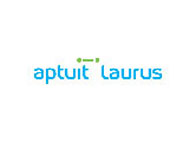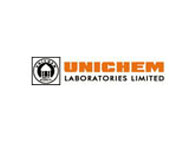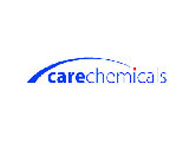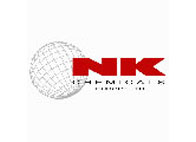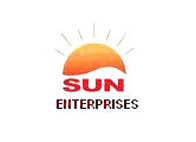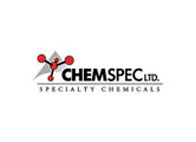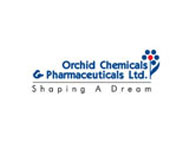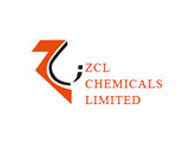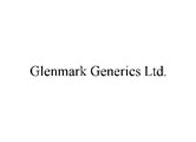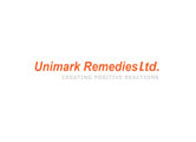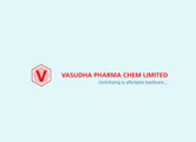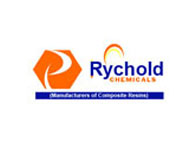Material Safety Data Sheet TRITYL CHLORIDE, 99%
Section 1 - Chemical Product and Company Identification
MSDS Name : Trityl chloride (Triphenylmethyl Chloride), 99%
Catalog Numbers : AC207660000, AC207660250, AC9638172, XXAC20766-65
Synonyms : Trityl chloride; Triphenylchloromethane
Plant Identification:
BALAJI FORMULATIONS PVT LTD
PLOT NO A#4, Industrial Estates,
Moulaali, Hyderabad.
Ph : 040-65223455
Fax: 04027241460
Head Office:
BALAJI FORMULATIONS PVT LTD
PLOT NO A#4, Industrial Estates, Moulaali,
Hyderabad
Ph : 040-65223455
Fax: 04027241460
Section 2 - Composition, Information on Ingredients
| CAS# | Chemical Name | Percent | EINECS/ELINCS |
| 76-83-5 | Triphenylmethyl Chloride | 99 | 200-986-4 |
Hazard Symbols : c
Risk Phrases : 34
Section 3 - Hazards Identification
Emergency Overview
Appearance: white to beige solid. Moisture sensitive. Danger! Corrosive. Causes eye and skin burns. May cause severe respiratory tract irritation with possible burns. May cause severe digestive tract irritation with possible burns. Target Organs: None.
Potential Health Effects
Eye : Causes eye burns.
Skin : Causes skin burns
Ingestion : May cause severe and permanent damage to the digestive tract. Causes gastrointestinal tract burns.
Inhalation : Causes chemical burns to the respiratory tract.
Chronic : None
Section 4 - First Aid Measures
Eyes : Get medical aid immediately. Do NOT allow victim to rub or keep eyes closed. Extensive irrigation with water is required (at least 30 minutes).
Skin: Get medical aid immediately. Immediately flush skin with plenty of water for at least 15 minutes while removing contaminated clothing and shoes. Wash clothing before reuse. Destroy contaminated shoes.
Ingestion : Do NOT induce vomiting. If victim is conscious and alert, give 2-4 cupfuls of milk or water. Never give anything by mouth to an unconscious person. Get medical aid immediately.
Inhalation : Get medical aid immediately. Remove from exposure and move to fresh air immediately. If not breathing, give artificial respiration. If breathing is difficult, give oxygen. Do NOT use mouth-to-mouth resuscitation.
Notes to Physician : Treat symptomatically.
Section 5 - Fire Fighting Measures
General Information : As in any fire, wear a self-contained breathing apparatus in pressure-demand, MSHA/NIOSH (approved or equivalent), and full protective gear. During a fire, irritating and highly toxic gases may be generated by thermal decomposition or combustion. Vapors may be heavier than air. They can spread along the ground and collect in low or confined areas.
Extinguishing Media : In case of fire, use water, dry chemical, chemical foam, or alcohol-resistant foam. Use agent most appropriate to extinguish fire.
Flash Point: Not available.
Autoignition Temperature : Not available.
Explosion Limits, Lower : N/A
Upper : N/A
NFPA Rating : (estimated) Health: 3; Flammability: 0; Instability: 0
Section 6 - Accidental Release Measures
General Information : Use proper personal protective equipment as indicated in Section 8.
Spills/Leaks : Clean up spills immediately, observing precautions in the Protective Equipment section. Sweep up, then place into a suitable container for disposal. Avoid generating dusty conditions. Provide ventilation.
Section 7 - Handling and Storage
Handling : Keep container tightly closed. Do not get on skin or in eyes. Do not ingest or inhale. Use with adequate ventilation. Discard contaminated shoes.
Storage : Keep container closed when not in use. Store in a cool, dry, well-ventilated area away from incompatible substances. Corrosives area.
Section 8 - Exposure Controls, Personal Protection
Engineering Controls : Facilities storing or utilizing this material should be equipped with an eyewash facility and a safety shower. Use adequate ventilation to keep airborne concentrations low.
Exposure Limits
| Chemical Name | ACGIH | NIOSH | OSHA - Final PELs |
| Triphenylmethyl Chloride | none listed | none listed | none listed |
OSHA Vacated PELs : Triphenylmethyl Chloride: No OSHA Vacated PELs are listed for this chemical.
Personal Protective Equipment Eyes : Wear appropriate protective eyeglasses or chemical safety goggles as described by OSHA's eye and face protection regulations in 29 CFR 1910.133 or European Standard EN166
Skin : Wear appropriate protective gloves to prevent skin exposure.
Clothing : Wear appropriate protective clothing to minimize contact with skin.
Respirators : A respiratory protection program that meets OSHA's 29 CFR 1910.134 and ANSI Z88.2 requirements or European Standard EN 149 must be followed whenever workplace conditions warrant a respirator's use.
Section 9 - Physical and Chemical Properties
Physical State : Solid
Appearance : white to beige
Odor : None reported.
pH : Not available.
Vapor Pressure : Not available.
Apor Density : 9.6
Evaporation Rate : Not available.
Viscosity : Not available.
Boiling Point : 310 deg C
Freezing/Melting Point : 110.00 - 112.00 deg C
Decomposition Temperature : Not available.
Solubility : Insoluble.
Specific Gravity/Density : Not available.
Molecular Formula : C19H15Cl
Molecular Weight : 278.77
Section 10 - Stability and Reactivity
Chemical Stability : Stable under normal temperatures and pressures.
Conditions to Avoid : Incompatible materials, excess heat, strong oxidants.
Incompatibilities with Other Materials : Strong oxidizing agents.
Hazardous Decomposition Products : Hydrogen chloride, carbon monoxide, irritating and toxic fumes and gases, carbon dioxide.
Hazardous Polymerization : Has not been reported.
Section 11 - Toxicological Information
RTECS# :
CAS# 76-83-5 : PA6450000
LD50/LC50 : Not available.
Carcinogenicity :
CAS# 76-83-5 : Not listed by ACGIH, IARC, NIOSH, NTP, or OSHA.
Epidemiology : No information available.
Teratogenicity : No information available.
Reproductive Effects : No information available.
Neurotoxicity : No information available.
Mutagenicity : No information available.
Other Studies : No data available.
Section 12 - Ecological Information
No information available.
Section 13 - Disposal Considerations
Chemical waste generators must determine whether a discarded chemical is classified as a hazardous waste. US EPA guidelines for the classification determination are listed in 40 CFR Parts 261.3. Additionally, waste generators must consult state and local hazardous waste regulations to ensure complete and accurate classification.
RCRA P-Series : None listed.
RCRA U-Series : None listed.
Section 14 - Regulatory Information
US FEDERAL
TSCA CAS# 76-83-5 is listed on the TSCA inventory.
Health & Safety Reporting List
None of the chemicals are on the Health & Safety Reporting List.
Chemical Test Rules None of the chemicals in this product are under a Chemical Test Rule.
Section 12b
None of the chemicals are listed under TSCA Section 12b.
TSCA Significant New Use Rule
None of the chemicals in this material have a SNUR under TSCA.
SARA
CERCLA Hazardous Substances and corresponding RQs
None of the chemicals in this material have an RQ.
SARA Section 302 Extremely Hazardous Substances
None of the chemicals in this product have a TPQ.
Section 313
No chemicals are reportable under Section 313.
Clean Air Act :
This material does not contain any hazardous air pollutants. This material does not contain any Class 1 Ozone depletors. This material does not contain any Class 2 Ozone depletors.
Clean Water Act : None of the chemicals in this product are listed as Hazardous Substances under the CWA. None of the chemicals in this product are listed as Priority Pollutants under the CWA.
None of the chemicals in this product are listed as Toxic Pollutants under the CWA.
OSHA : None of the chemicals in this product are considered highly hazardous by OSHA.
STATE CAS# 76-83-5 is not present on state lists from CA, PA, MN, MA, FL, or NJ.
California No Significant Risk Level: None of the chemicals in this product are listed.
European/International Regulations European Labeling in Accordance with EC Directives
Hazard Symbols : C
Risk Phrases : R 34 Causes burns.
Safety Phrases : S 24/25 Avoid contact with skin and eyes.
WGK (Water Danger/Protection)
CAS# 76-83-5: No information available.
Canada - DSL/NDSL
CAS# 76-83-5 is listed on Canada's DSL List.
Canada - WHMIS
This product has a WHMIS classification of E.
Canadian Ingredient Disclosure List Exposure Limits
Section 15 - Additional Information
MSDS Creation Date : 5/26/1998
Revision #2 Date : 3/18/2003
The information above is believed to be accurate and represents the best information currently available to us. However, we make no warranty of merchantability or any other warranty, express or implied, with respect to such information, and we assume no liability resulting from its use. Users should make their own investigations to determine the suitability of the information for their particular purposes. In no event shall Fisher be liable for any claims, losses, or damages of any third party or for lost profits or any special, indirect, incidental, consequential or exemplary damages, howsoever arising, even if Fisher has been advised of the possibility of such damages.
Clients



